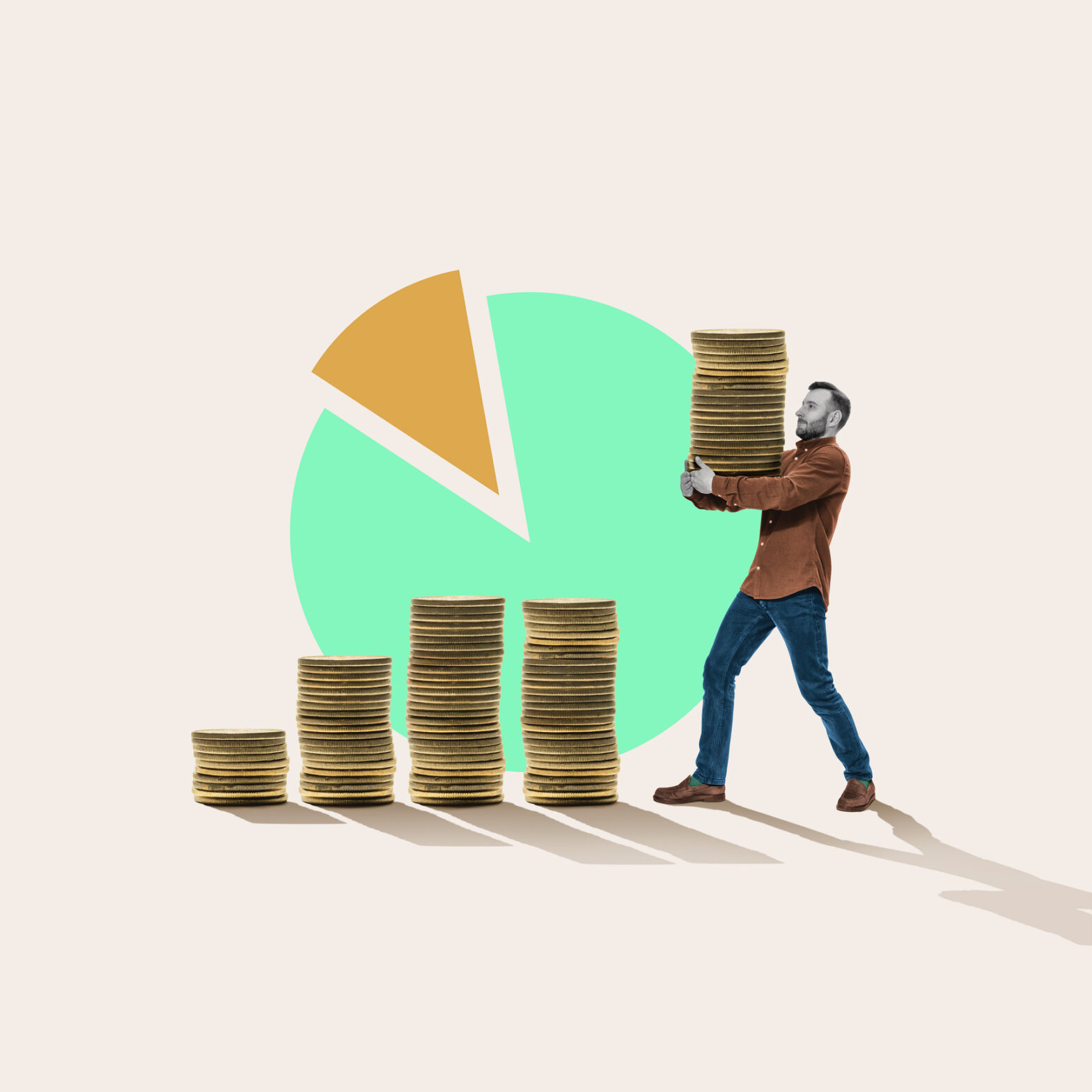If you’re new to the start-up funding world, you’ll no doubt have stumbled across the words ‘pre-seed’, ‘seed stage’ and ‘Series (x)’ – including on this website. What does it all mean? Here, we break down what the funding rounds are and how to prepare for them.
Understanding funding rounds
It can be confusing differentiating between each funding round. To take pre-seed as an example, a company can typically expect to receive anything from £50,000 to £500,000 in investment, but Hussein Kanji of Hoxton Ventures says you’ll occasionally see a serial entrepreneur raising up to £3m.
But if the investment size doesn’t define the funding round, what does?
Kanji says it depends on where the business is at in its trajectory. Has it got staff? Has it been running for a little while? Has it got revenue or traction? Generally speaking, it’s also the order of cheques the company receives: the first usually being pre-seed, the second seed, the third Series A and so on.
Between these funding rounds there’s typically a three-times change in valuation. “In the early stages, [the valuation is] driven by the team, product and market; in the later stages it is driven by revenue numbers,” Kanji explains.
If there isn’t a milestone change in the company, the founder sometimes doesn’t have a choice but to extend the current round to get more money in on the same terms, reported as Series A1 and A2, etc – although this isn’t typical. There might be marginal differences, such as Series B1’s round not ending in an investor taking a board seat and B2’s does, for example.
In terms of equity, the rule of thumb is 20 per cent per round but in recent years, it’s edged closer to 10 to 15 per cent per round.
The funding rounds
Pre-seed
Your business is little more than an idea and a plan and you require some starting capital to get the ball rolling. This is the pre-seed stage, and it is the earliest funding round a business undertakes – one typically funded by personal savings or friends and family.
Sometimes, for the right business, a VC will get involved.
“Is it a new market and will this company become the dominant company in this new category?” Kanji asks when deciding which companies are ripe for VC funding.
He gives an example of an early-stage company Hoxton have recently invested in – a business trying to produce leather made from… mushrooms.
“It sounds incredulous, right? But we called up the scientists, and there were some real reasons why they could win.
“Others tried [the idea] and couldn’t scale, but we thought a clean sheet of paper with the right scientists who have learnt the lessons [of the past] would be a compelling reason why this company could win that category.
“Alternative leather, we thought, was a category so we wrote the cheque.”
If you go down the venture capital route, you can expect to give up between 10 and 20 per cent equity in return for funding.
It is worth noting that at the pre-seed and seed stage, investors will put much of the spotlight on you and your team. Have you got expert domain knowledge or experience – or have you hired people with more knowledge or experience than yourself? Are you trustworthy, honest and have the ability to sell?
“The strength of the founding team is our main focus – we like to see founders who are well-aligned in their company and have a lot of industry knowledge,” Joseph Zipfel of SFC Capital says. “Extra points if they’ve got a bit of a head start, hold some valuable intellectual property, or have a standout support network. These elements convince us to jump in with investment.”
Investors will also want to know why the timing for the product is right and if the business would have the ability to attract top talent in a particular field. You will also need to answer why you need venture capital instead of another form of funding – venture results in equity dilution, after all.
The investment will typically be used for market research, development, travel and incorporating the business. The end result should be a minimum viable product (MVP).
What is pre-seed funding? – Pre-seed funding means bootstrapping your business, either using your own cash or raising money through family and friends. However, some venture capitalists do offer pre-seed for the right kind of business
Seed stage
Now, the business will be pre-revenue with proof of demand. This is also known as the angel stage if angel investors are backing the company.
A classic seed round business will have a product, customer loyalty and a team so investors have more to go on.
Angels can provide the capital, direction and contacts to help the business grow to the next stage.
For investors, this is a high-risk investment as the company will have yet to prove itself on the market. However, this is when the company’s valuation is the lowest and it gives them the opportunity to invest again in the later stages if growth really takes off.
Some venture capital firms, like JamJar Investments, invest at seed stage and Series A. They look for a strong team, a simple but compelling proposition and companies looking to raise between £500,000 and £3m.
Another VC at seed and Series A is Ascension. At these early stages they look for robustness of IP, a clear route to market and strong, leveraged marketing and distribution strategies in place.
What are potential sources of funding for your business? – To help navigate through the numerous business funding options on the market, Acuity partner Matthew Byatt takes a brief look at those available
Series A
Series A is a start-up phase, where the company will typically leave angel investment behind and look to venture capital, if it hasn’t already, to help it launch.
It is a crucial stage for a company raising capital, which will likely give up between 10 and 30 per cent of its equity in return for between £2m and £10m depending on the industry.
You should aim to raise enough capital to last two years, however most start-ups receive enough to give them 12 months’ runway.
Series A investment is typically used for product development, marketing and taking on more staff to allow it to continue growing.
Investors will be expecting to see steady increasing revenue or a growing customer base at this stage.
How to pitch to investors: What fundraising collateral do I need? – What documents do you need when fundraising and which are the most important? Octopus Ventures expert Simon King provides the answers
Series B
With a business gaining traction and consequently becoming less risky for investors to back, more venture capital firms may take part in this round.
In many ways, there’s not a lot to distinguish Series B from Series A other than the investment size – and a new set of investor documents – but different investor names will be in the hat as some specialise in Series B to later funding rounds, while many seed stage investors drop out.
The company will have also reached a point where it has proven itself on the market. According to Seedlegals, a Series B company will have grown the team to over 50 employees and acquired a majority market share locally.
Once Series B funding has been secured, businesses can look to expand internationally, increase market share nationally and grow the team to over 100 employees.
One investor at Series B stage is Beringea. They typically look for proven commercial traction and a growing business in a “substantial addressable market.” In return, they can help companies expand into new markets, build leadership teams and provide network connections. They typically invest between £1m and £10m into companies turning over £1m or more.
As well as the bigger investment pot, Series B comes with it more complex deal terms – so you will need a venture capital lawyer to navigate you through.
Series C
Series C is when start-ups have developed into profitable scale-ups which are looking to expand their operations or venture into a new market.
By this stage, companies will have developed a strong market fit, a customer base and require more capital to expand further to prepare themselves for IPO.
Companies can look to raise between £15m and £100m at this stage with a valuation of over £200m. Because of the reduced risk and higher cheque sizes, many private equity funds come into play from Series C onwards.
Series D and beyond
Seed through to Series C are the main funding rounds and start-ups can look to IPO after that. However, there are also Series D, Series E and Series F rounds, which are for companies readying themselves for IPO and require bigger investments.
Is there a set amount each round looks to raise?
No, but typical investment amounts per round are:
Pre-seed – £50,000 – £250,000
Seed – £500,000 – £1.5m
Series A – £2m – £10m
Series B – £10 – £50m
Series C – £15 – £100m
Series D and beyond – £100m+
More on funding
Fifteen ways to raise £1 million in business finance – Expansion requires financial muscle, be it for operations, research and development or an acquisition. Marc Barber looks at 15 ways to raise finance
How to raise first equity finance for your business – What are the different types of equity finance you can raise for your business? Here are the different types and the amounts you can raise






